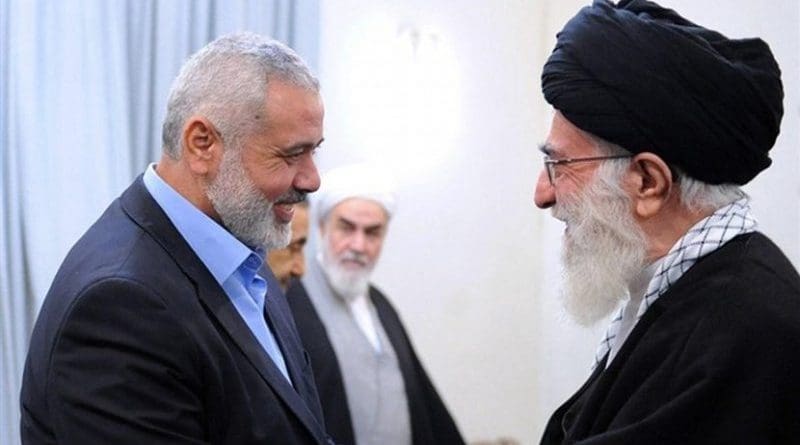Iranian Regime Origin Of War In Middle East – OpEd
By Hamid Enayat
There is hardly any dispute that the order for war against Israel was not issued by Hamas, but rather by Ali Khamenei, the Supreme Leader of Iran. The extensive network of tunnels, coupled with the presence of drone and missile stockpiles, and the control of thirty thousand militias under a unified command, make it naïve to solely attribute these actions to Hamas. Nonetheless, it seems that European and American governments are intent on obscuring the fact that Khamenei issued the attack order on October 7.
Ezzatullah Zarghami, the former missile officer of the IRGC and current Minister of Tourism, revealed on a television program that he had spent time in the underground tunnels in Gaza. There, he provided training to Hamas forces on missile production, highlighting the Islamic Republic’s military support for Hezbollah and Hamas.
If the Iranian regime is advocating for a ceasefire, it’s not to halt war and prevent the killing of non-combatant civilians, but rather to protect Hamas. The Mullahs’ goal is to maintain Hamas as their military proxy, perpetuating regional tensions and hindering the establishment of two independent states – Palestine and Israel. This strategy, which they have long pursued, stands in contrast to the establishment of two independent nations, a step that would be conducive to fostering peace.
However, the elimination of Hamas in Gaza won’t eradicate the threat, as the Iranian regime could easily create another backward force in its place. It is crucial that the Iranian regime be severed from its influence over Hamas and any other civilian forces in the region and beyond.
Tehran is playing a duplicitous role; while their proxy forces persist in their attacks, the Mullah regime claims they operate independently, denying any intent to escalate the conflict. Consequently, the mullahs are tactically maneuvering through this phase, laying the groundwork for future conflicts.
During a ceasefire, whenever Hamas initiates operations in Jerusalem, it is clearly aimed at continuing the state of war. It becomes apparent that Hamas’s operations are heavily reliant on Tehran’s backing.
In a meeting with Ziad al-Nakhala, Secretary General of Islamic Jihad in Gaza, General Hossein Salami, the Commander in Chief of the Islamic Revolutionary Guards Corps (IRGC), highlighted that “The liberation of Jerusalem is the ideal and strategy of Khomeini and Khamenei.” This statement, reported by The Independent on August 6, 2022, underscores the enduring support for the Palestinian resistance’s evolution and continuity.
The Tehran regime’s survival is deeply entwined with the perpetuation of war, crises, and terrorism. Peace is perceived as a threat by this regime, which is why it views Ibrahim’s efforts towards normalization with apprehension and was satisfied with its success in disrupting them.
The IRGC, especially through the Quds Force, act as Tehran’s agent of warmongering, conducting terrorism abroad. Within the Quds Corps, there are specialized departments focusing on various countries, including Syria, Iraq, Yemen, and others.
Currently, the Mullahs are engaged in three distinct conflicts. The first is against the international community, involving the development of nuclear weapons and the deployment of lethal drones in the war in Ukraine. The second is regional, where they are stoking conflicts in Syria, Yemen, Iraq, and now, Israel and Gaza. However, the most critical battle for them is the one against their own people, the Iranians.
Since the start of the Middle East conflict on October 7, the Iranian regime has executed 170 people. These executions are a tactic to suppress any potential uprising that might threaten their rule.
The regime’s confrontations with regional nations and the broader international community also serve a domestic purpose. Khamenei has stated that if Iranian forces do not engage in conflicts in regional countries, they would have to do so in Tehran itself.
Despite their brutal repression, the eruption of another uprising and the potential for regime change is inevitable. This underlying fear is a main factor behind Tehran’s orchestration of the Hamas attack on Israel. “
The core of the terrorism issue in Tehran must be addressed decisively. In this context, imposing sanctions on the IRGC and its terrorist wing, the Quds Force, has been suggested. However, there is a perplexing contrast: while the European Parliament sanctioned the Islamic Revolutionary Guard Corps for its involvement in domestic killings and regional warmongering, the European Union has refrained from implementing these sanctions, citing dubious reasons.
True peace in the region and globally goes beyond simply labeling the IRGC as a perpetrator of war. As global and regional adversary of peace, the Iranian regime must be placed under Chapter Seven of the United Nations Security Council resolution. This is a measure that should make Iran’s leaders take international warnings more seriously.
It is clear that toppling the religious dictatorship in Iran will lead to global and regional peace and security. The Iranian people, particularly its youth and women, will bear the cost of this upheaval. It is imperative that the world community extend support to them in their quest for another uprising.

